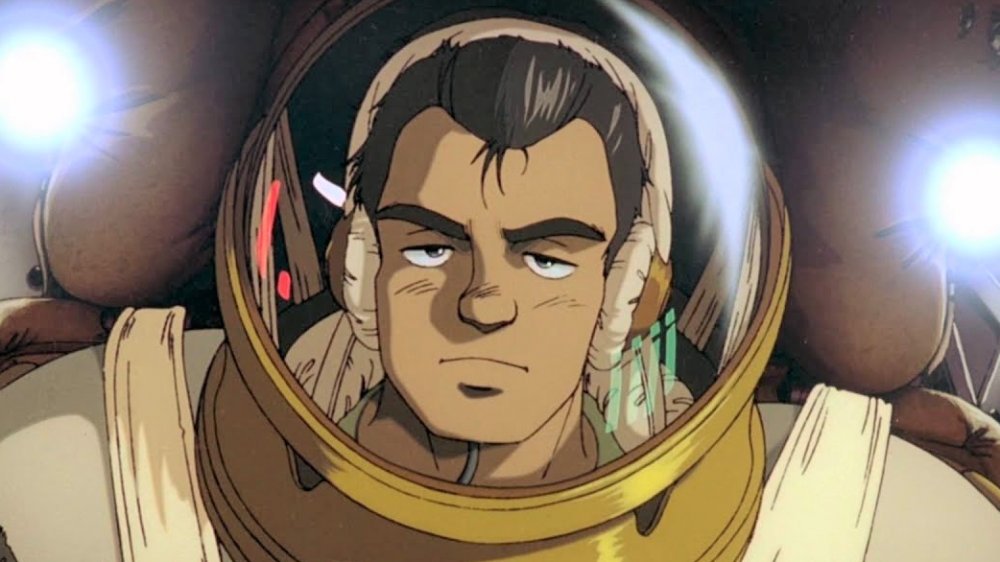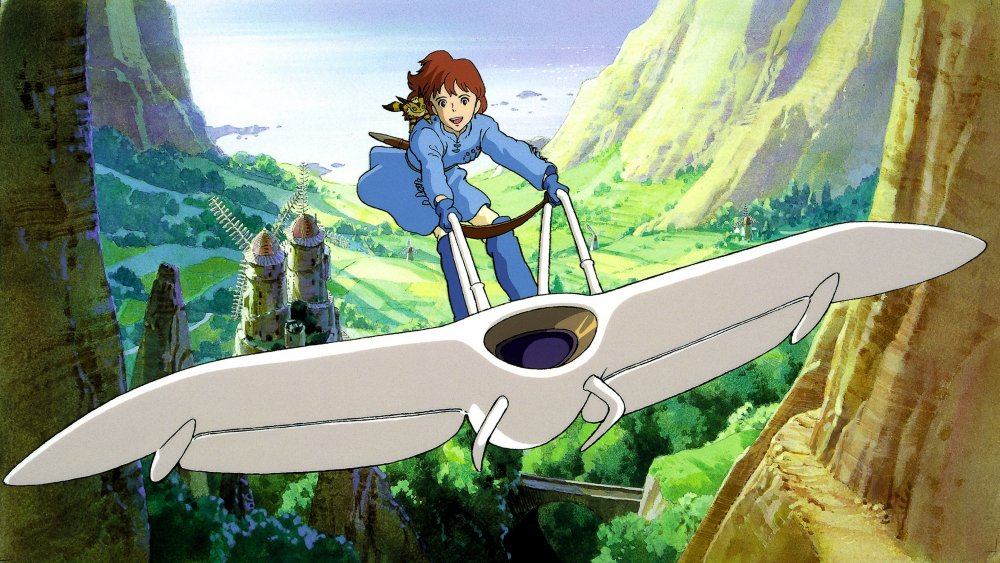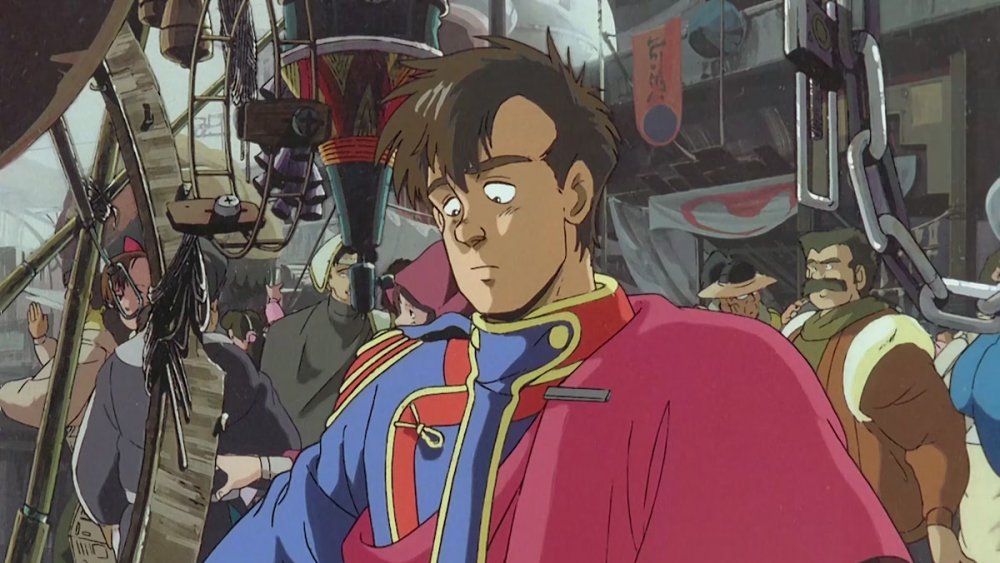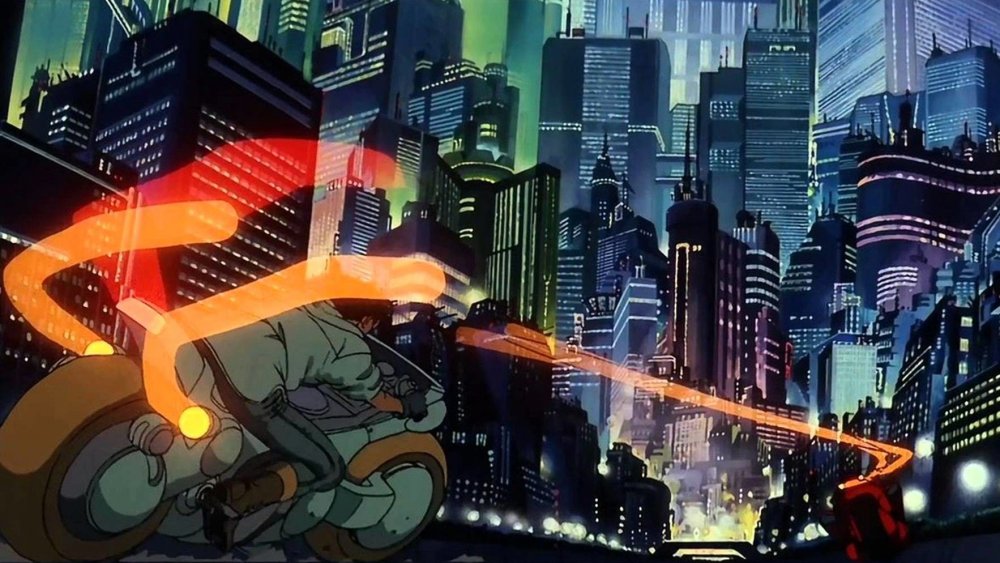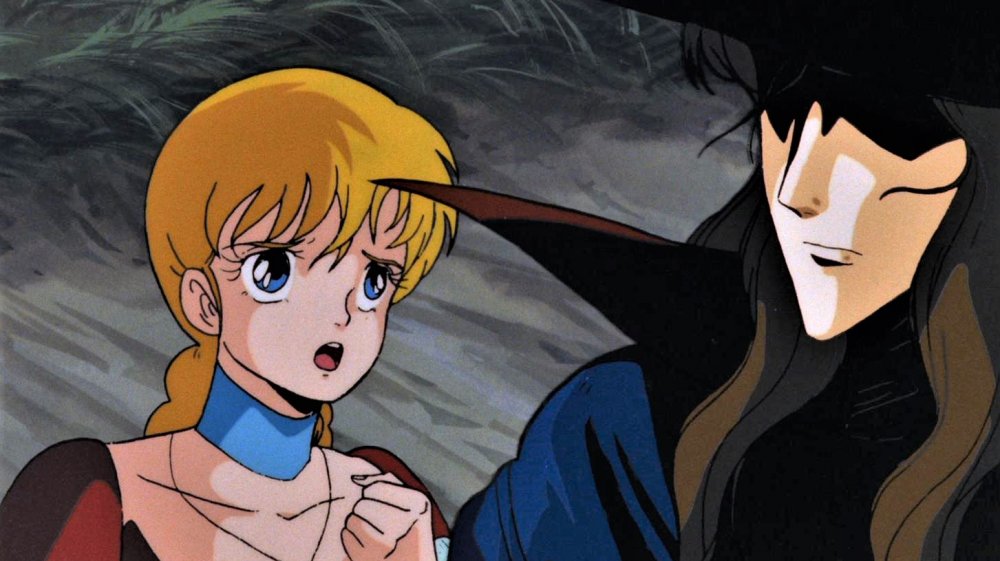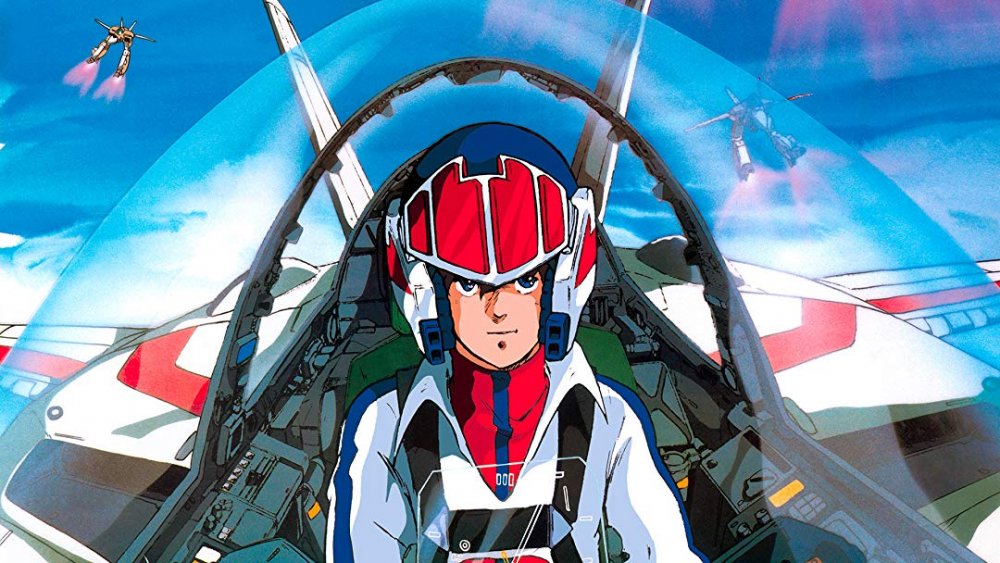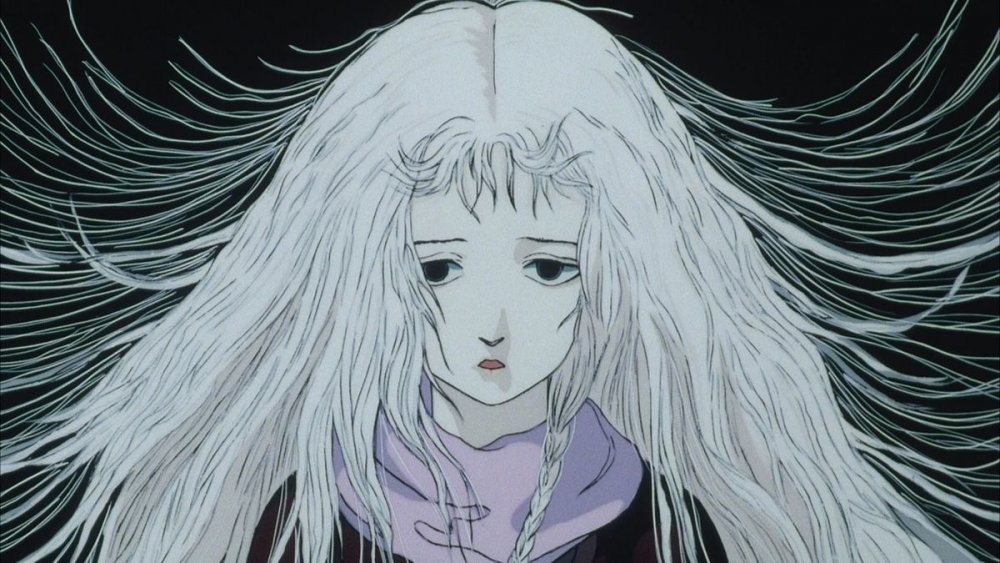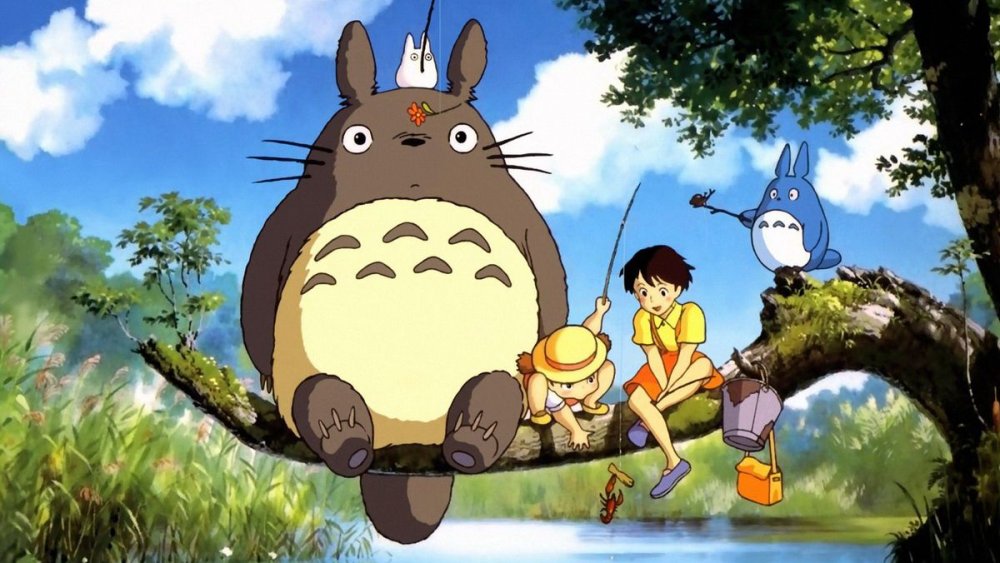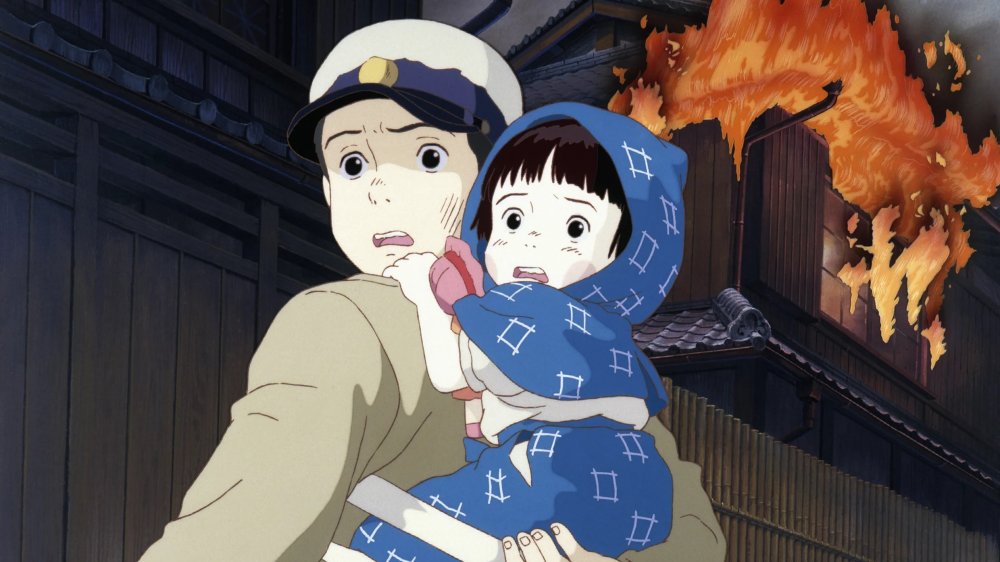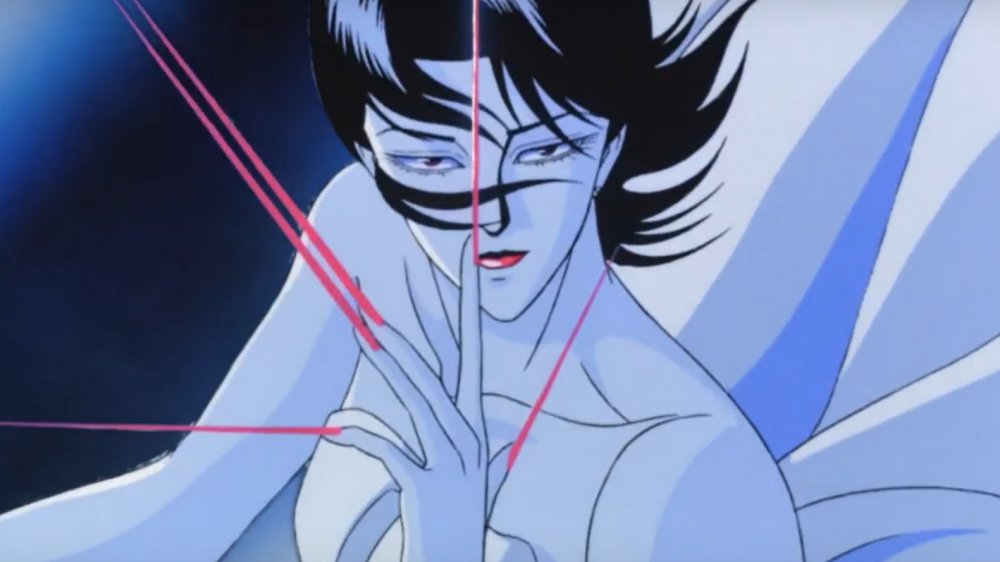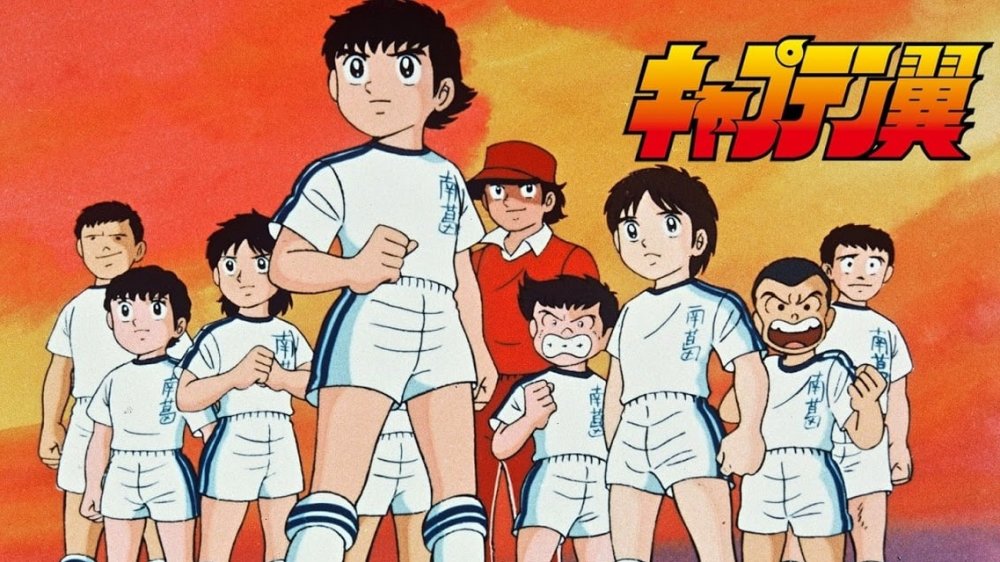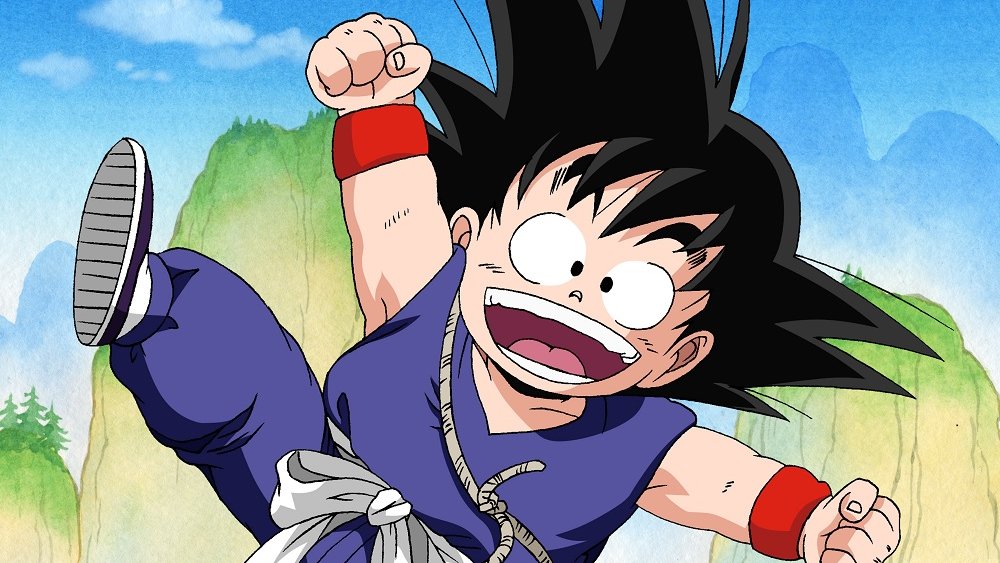The Best Anime Of The '80s
The '80s are often considered the golden age of anime and for good reason. That's when Studio Ghibli, Kyoto Animation, J.C. Staff, and Daicon Films (known as Gainax today) were all formed, and producers started opening their minds to a much wider range of genres. Plus, a number of different factors led to a boom in the production and consumption of anime during the 1980s, from the introduction of VHS to the strength of the Japanese economy. As a result, anime studios were one-upping each other year after year with increasingly higher budgets, vying to create the next big hit.
Creatively speaking, this era was incredibly fruitful, giving us some of the greatest anime films and series ever made. In fact, people are still talking about 1980s anime to this day. But of this incredibly crowded decade, which offerings are the best of the best? Which movies and shows are finding new ways to influence filmmakers, gain fans, and inspire audiences all these years later? Well, from Studio Ghibli classics to cyberpunk and horror, these are the best anime of the '80s.
Nausicaä of the Valley of the Wind is a Miyazaki classic
Based on Hayao Miyazaki's manga series of the same name, Nausicaä of the Valley of the Wind laid the way for Studio Ghibli. The now legendary anime house was founded on the back of this groundbreaking film, which was inspired by mercury pollution in Japan's Minamata Bay. The story takes place a thousand years after an apocalyptic event that left the planet in ruins. Large swathes of land are covered by toxic jungles that are full of giant, mutated insects. Nausicaä, princess of the titular valley, hopes to find a way for the surviving humans and the inhabitants of these toxic jungles to co-exist, but her quest for harmony is frustrated by the power hungry kingdom of Tolmekia.
Nausicaä is, at heart, an anti-war tale. The event that destroyed the world (referred to as the "Seven Days of Fire") was caused by bio-weapons created by humans, and the film's plot revolves around two nations fighting over an embryo that can be used to recreate these devastating weapons of mass destruction. The influence of the political climate of the day is clear to see. Miyazaki mirrors the Cold War in Nausicaä, creating a stalemate between two powers and playing on mankind's fear of nuclear conflict.
The film, which was later dubbed "Hayao Miyazaki's first masterpiece" by RogerEbert.com, also marked the first collaboration between Miyazaki and music director Joe Hisaishi, who would go on to compose memorable scores for some of Miyazaki's most famous movies.
Royal Space Force: The Wings of Honnêamise is a gritty, underrated anime
In 1987, Gainax (the studio that would go on to create '90s classic Neon Genesis Evangelion) debuted with a film called Royal Space Force: The Wings of Honnêamise, and it was a real statement from the new boys on the block. Written and directed by a then 24-year-old Hiroyuki Yamaga, Wings of Honnêamise is set in an alternate future in which mankind is yet to visit space. Inspired by a girl he meets, protagonist Shiro volunteers to become the first-ever astronaut. It sounds like something Hayao Miyazaki might make, but Yamaga's film is a lot gritter than your typical Studio Ghibli fare, which was partly why it failed to make the desired impact upon release.
However, it went on to be recognized as an important work, and according to The Quietus, it should still be considered "required viewing" for all anime fans today. As the online magazine explains, "The aerial sequences in Wings are visually remarkable: the color tones in the sky, the perspectives of the ground and the horizon, the weightless play of the 'camera' above the clouds. It's top-drawer art direction, storyboarding, editing, you name it."
Akira is an '80s masterpiece
Released in 1988, Katsuhiro Otomo's Akira was the most expensive anime film of its time, and on top of that, it was an overnight hit. The aesthetic of the film, set in a mega city that sprung up following the destruction of Tokyo some three decades earlier, continues to inform the cyberpunk genre to this day. The neon-flooded streets of Neo Tokyo were painstakingly created using cel animation, and the hard work really paid off. The film has a rich quality to it, and it looks better than pretty much everything that came before it. "We didn't even use computers back then," key animator Kuni Tomita said (via The Japan Times). "All hand-drawn. If you think about that, it's incredible work. Lots of dedication."
Akira was well-received across the board in Japan, and it made enough of its billion+ yen budget back to be considered a financial success. Crucially, Otomo's film (which was based on his own long-running manga series) was making waves overseas, too. "Anime had briefly entered American markets with such imports as Speed Racer, but none had quite the effect of Akira," Film School Rejects recalls. "The film was distributed on bootlegged VHS tapes throughout colleges, and once American audiences witnessed the film, they were hungry for more anime than ever." Hollywood has been trying and failing to get a live-action Akira movie off the ground for years now, but hey, you can't improve on something that's already so awesome.
Vampire Hunter D is a brilliant blend of action, fantasy, and horror
Based on a series of novels by horror author Hideyuki Kikuchi, 1985's Vampire Hunter D became known as a cult classic in the years following its release, partly because it was among the first batch of anime films to hit the United States in the '90s. The movie was essentially a direct adaptation of the first Vampire Hunter D novel, which was only two years old at the time. The titular vampire hunter is hired by a blonde-haired, blue-eyed farm girl named Doris Lang who wants to kill the vampire noble that attacked and bit her. Like Marvel's Blade, D is the half-breed child of a vampire and a human, meaning he has extraordinary vampire powers with few of the usual vulnerabilities.
According to Forbes, the first Vampire Hunter D movie was considered a huge success upon release. The melding of sci-fi and high fantasy settings proved popular with fans on both sides of the Pacific, and people are still raving about the film today. The blend of "cheese and gore" is nothing short of "delightful" according to Bloody Disgusting, which revisited the macabre classic in 2019. "From D's robotic horse, to Gothic castles, to beings with psychic abilities, Vampire Hunter D's world is truly unique," the horror site said. "The 1985 film involves a story that one can enjoy without requiring a deep knowledge of the series."
Super Dimension Fortress Macross is the best mecha show of the '80s
A number of memorable mecha shows debuted in the 1980s. Deciding which one to invest your time in can be tricky, but in our opinion, there's one anime that stands head and shoulders above the rest when it comes to giant robots doing battle. Super Dimension Fortress Macross takes place in 2009, a decade after a giant extraterrestrial spacecraft crash-landed on earth. Mankind was able to reverse engineer this starship (christened the SDF-1 Macross) and make use of the advanced tech, but this comes at a cost, as war breaks out when a race of aliens identifies the Macross as a vessel that used to belong to their sworn enemies.
Super Dimension Fortress Macross delivers on the action front, but what sets it apart is its epic soundtrack and romantic elements. Creator Shoji Kawamori once described the show as "a love triangle against the backdrop of great battles," a formula that would be reverted to in several Macross sequels in the coming years. Macross wouldn't be Macross without the music, however. The franchise has always relied heavily on its soundtracks, some of which became just as famous as the show. In fact, Mari Iijima, the voice actress who played idol singer Lynn Minmay in Super Dimension Fortress Macross, launched her music career on the back of the show's success. And if you need more proof that this show is plain awesome, no matter the format, a dubbed and highly edited version of Super Dimension Fortress Macross was released in the States under the name Robotech, which became a big hit in its own right.
Angel's Egg is the very best of art house anime
Mamoru Oshii is probably best known for directing 1995's Ghost in the Shell, a film that's quite rightly considered essential viewing among anime fans the world over. Like Akira did in the '80s, this cyberpunk epic captured the imagination of American audiences with its stunning visuals. But while the plot left a lot of viewers scratching their heads, Ghost in the Shell was child's play compared to Angel's Egg.
Released a decade earlier, Oshii's collaboration with legendary artist Yoshitaka Amano requires patience. The film only has two characters, and they don't speak very often. The first real line of dialogue comes 25 minutes into this 71 minute movie. On the surface, Angel's Egg is just a beautifully executed art house film, a "poem come to life through visual interpretation," as Classic Anime Museum puts it. It's meant to be admired for its unique style rather than fully understood, but there's a story in there, if you know where to look.
Oshii is known to have studied Christianity for a number of years, and most of his works incorporate Christian themes. Angel's Egg is rich in religious symbolism, but the message is far from positive. According to film critic Chris Stuckmann, Oshii had "a falling out with his faith" prior to making Angel's Egg, and that much becomes clear as the film progresses. So if you're looking for a beautiful, contemplative film about the nature of faith, then this '80s classic is definitely worth a watch.
My Neighbor Totoro was a landmark movie for Studio Ghibli
Hayao Miyazaki followed his groundbreaking hit Nausicaä of the Valley of the Wind with 1986's Castle in the Sky, a wonderfully animated film that's most definitely deserving of your time. That being said, there's way more to '80s anime than just Ghibli, so we're going to skip past the studio's first official feature (which, again, we can't recommend enough) and get right to 1988's My Neighbor Totoro, a landmark movie for Miyazaki.
This iconic anime revolves around two sisters who've just moved to the countryside to be closer to the hospital that's treating their sick mother, and while they're there, they meet a magical creature. Miyazaki reportedly alarmed investors when he announced that he was going to make a 1950s-set film about two little girls and a forest spirit named Totoro, but he proved the skeptics wrong as the picture (and the titular character) would come to define Studio Ghibli in the years to come.
According to Helen McCarthy, author of Hayao Miyazaki: Master of Japanese Animation (via Little White Lies), My Neighbor Totoro "extended the studio's positive green and social credentials by tying itself so firmly into a simpler time and a society ruled by nature." It was this simplicity that made the film so special. Plus, there's an interesting layer of ambiguity, too. The fantastical Totoro doesn't feature all that often, with the focus remaining largely on his human neighbors. The forest spirit only shows up when the girls need him, leaving some viewers convinced that he's actually a product of their imaginations.
Grave of the Fireflies is one of the most devastating movies ever made
Studio Ghibli's Grave of the Fireflies shows the closing stages of World War II in Kobe, Japan, through the eyes of a young brother and sister. Their mother dies of the burns she receives during an air raid early on in the movie, and the kids later learn that their Navy captain father is most likely at the bottom of the ocean along with the majority of the Japanese fleet. Seita and his sister, Setsuko, move from place to place trying to stay alive, but at this point the audience already knows that it's hopeless. After all, the film opens with Seita dying of starvation and joining his sister's spirit before it jumps back in time.
Grave of the Fireflies is a difficult, often harrowing watch — even more so when you know that the writer-director actually lived it. Isao Takahata (who passed away in 2018 at 82) and his sister, aged nine and ten at the time, had to flee their home in Okayama when the city was bombed. "As I was running, more and more all around me, something would get hit, so the running would get more and more confusing," Takahata once said. "I'll go this way, I'll go that way, and then something was bursting into flames." That backstory makes a devastating film even more powerful. As a result, Grave of the Fireflies isn't the kind of film you watch on repeat, but every anime fan should see it at least once. Over 30 years have passed since its release, yet it remains as relevant as ever.
Wicked City is messed up anime at its very best
Legendary anime studio Madhouse was created in the early '70s by four former employees of the studio Mushi Pro, which had fallen into turmoil. One of those former employees was Yoshiaki Kawajiri, who emerged as a strong director in the 1980s and helped establish Madhouse as a central player. He made his debut with the Star Wars-esque Lensman in 1984, a clean movie with little in the way of violence. The same can't be said of his sophomore effort, the unflinching gore fest that is 1987's Wicked City.
What started as a 35-minute short film ended up getting expanded into a feature when Kawajiri's backers saw what he was producing and sensed a hit. In Wicked City, the human world secretly coexists with a demon world. A covert police force known as the Black Guard protects the boundary between the realms, which becomes dangerously blurred as the human-demon treaty nears its renewal date. The movie opens with a particularly memorable scene involving a spider-like female demon that tries to, um, emasculate our protagonist, Taki. He escapes intact. But yeah, this messed up anime isn't exactly family friendly.
"As dark and deranged as Wicked City can get, there is always a weight to it that also gives it heart," Project Fandom's in-depth review of the film states. "Marry that with a good plot, a dash of cyberpunk, and Madhouse's industry leading animation, and you've got yourself a classic." Fortunately, it wouldn't be Kawajiri's last classic, as he went on to make 1993's Ninja Scroll.
Captain Tsubasa is a major work for both anime and soccer
The Samurai Blue have become regulars at the FIFA World Cup over the past couple of decades, but back when manga artist Yōichi Takahashi started working on Captain Tsubasa, soccer wasn't a well-known sport in Japan. In fact, the country didn't even have a professional league until the 1990s. So how did a soccer manga and its subsequent anime adaptation manage to capture the imagination of this baseball-loving nation?
Well, Takahashi fell in love with soccer during the 1978 World Cup, which took place in Argentina but was televised in Japan. He then managed to capture the essence of the beautiful game in Captain Tsubasa (which debuted in Weekly Shōnen Jump in 1981), successfully selling the sport to his compatriots in the process. Many see Takahashi's creation as being absolutely critical to the development of soccer in the Land of the Rising Sun. "I'm grateful that people say so, and it honestly pleases me to think that I may have been able to give a boost to Japanese soccer to some degree," Takahashi said (via These Football Times).
As for the plot, Captain Tsubasa follows 11-year-old soccer fanatic Tsubasa Oozora as he progresses from student athlete to full-blown superstar, playing for some of the biggest teams in Europe. Dubbed versions of the anime proved popular on the continent, particularly in Spain. "I remember when I was a kid ... everyone in school was talking about this cartoon about football, from Japan," World Cup-winner Fernando Torres once said, going on to add, "I started playing football because of this."
Dragon Ball is an '80s gem ... and actually better than Dragon Ball Z
Dragon Ball Z has become so popular in the West that even those who had no idea what anime is have heard of it. The show dominated in the late 1990s, establishing a middle ground between the Saturday morning-type cartoons that America was used to and the hyper-violent, adult orientated anime that occasionally arrived from Japan. DBZ had a huge impact in its country of origin, too. The positive reaction to the series led to the likes of One Piece, Naruto and Bleach getting anime adaptations, and the original Dragon Ball manga still informs the shonen genre to this day. But what a lot of people don't seem to realize is that DBZ in't the first anime based on Akira Toriyama's influential manga.
Premiering in 1986, Dragon Ball is different to sequel series DBZ in numerous ways. In the original series, main character Goku isn't a muscle-bound, over-powered alien. He's just an odd little boy with a monkey tail who happens to be super strong. That might sound a little boring to those who were brought up on DBZ, but Dragon Ball is an undeniably brilliant show in its own right. In fact, depending on what you're looking for in an anime, it's arguably the better of the two. There's less angst and more comedy. There's less flying around and more actual martial arts. And there's way more reverence for the mystical, wish-granting orbs that the story is named after, which were utilized far too frequently in DBZ.
